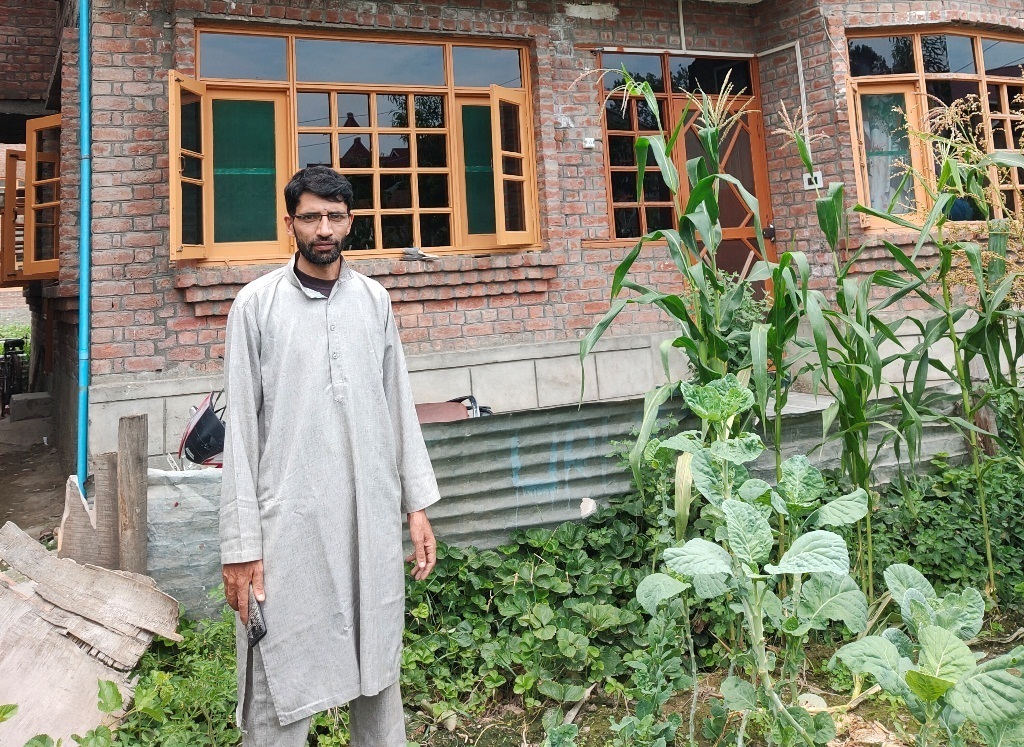
From Downtown areas to Lal bazar, the smell is all over the place.
LIVING in the immediate vicinity of the Srinagar’s only garbage dumping yard—Achan—Tariq Bhat is eager to show the house his neighbor had to sell off.
“This is the house Ghulam Mohammad sold recently,” Tariq points his fingers towards the house. “He did not find the vicinity livable anymore because of the garbage dumped in the locality.”
Tariq’s neighbor had to sell his two-storied house with around six marlas of land at a meager amount of Rs 32 lakh.
“Land in our locality has lost its value,” continues visibly angry Tariq. “Here a kanal of land sells at around Rs 80 lakh, whereas in the nearby Zoonimar area it sells at more than double the price here.”
Behind the distress sale and the silent departure from one of the most reported city pockets is the unbearable stench which often leaves the residents gasping for breath.
“Our woes do not end here,” Tariq says. “We can’t open windows of our rooms due to strong stench. And whenever we do open our windows, there’re flies all over the place.”
People living in the locality complain of chest-related complications. Tariq puts the blame on Srinagar Municipal Corporation (SMC) for not adhering to Health and Medical protocols while dumping the garbage.
“In the past,” he says, “I have myself thought of leaving this place for good.”

However, before the present day controversial dumping yard created what locals call “mess and migration”, Achan was a mesmerising landscape, recalls Abdul Majid, a native turning nostalgic about “good old days”.
“During my childhood days,” says Majid, a man in his fifties, “we used to go fishing in the fresh waters here. But since the day dumping of garbage started, all good things of this place have vanished. It’s a mountain of garbage now and is not worth living.”
Even though he does not remember the names of people who have vacated their homes in the recent years, Majid does acknowledge there’s a migration taking place.
“In the last few years many people have left this place after authorities turned Achan into a living hell for natives,” he says. “This land used to be the property of revenue department and it was acquired by the SMC for dumping garbage. Since then there has been no end to our woes.”
Holding a copy of government order, with vide order no. 9942, dated 13-01-2010, in his hand, Nazir Ahmad, who heads the Mohalla Committee Saidpora Achan, remembers how a decade ago the office of the Assistant Commissioner Public Works Department notified the area as no construction zone.
“After government notified the area, it lost the value it had,” Nazir says.
Three decades back, when Nazir moved from Karan Nagar to this place, it used to be a locality of around 20 households.
“But now, even as there’re more than 250 households here, dog population has overtaken the human populace. The situation is so bad that even our relatives don’t come to our place.”
Like others, Nazir regrets moving to Achan saying that authorities had promised the locals that they would be relocated but no concrete steps were taken.
“In the past, SMC used to provide us with things like brooms and phenyl, but now it has all stopped,” Nazir says. “They are at odds with the locals.”
There’re only two ways about it now, he says—“Either the authorities should relocate us which seems unlikely, or they should stop dumping garbage here.”
Nazir even wrote to the heads of SKIMS and Chest Diseases Hospital to hold a camp in Achan for studying the impact of garbage dumping on the health of locals “but all my pleas fell on the deaf ears”.
Exasperated by the pungent smell and an unhealthy ambience of the Saidpora locality, Mohammad Yusuf, a Pashmina weaver by profession, is ready to bid a goodbye to his ancestral abode for a better future for his children.
But it looks like a farfetched dream for him as no one is willing to buy his house at an adequate price.
Finding a customer for his house is hard, he acknowledges. His son, who has reached the marital age, is furious.
“No one is willing to get his daughters married here,” he yells with a visibly disappointed face.
However, his father looks calm and is ready to vacate the legacy of his ancestors as “it’s no more livable”.
Yusuf remains hopeful of finding a customer who is willing to pay an appropriate price for his property. However, he has a request for the government: “If the government does not care for the locals, they should care for the patients because this dumping yard is in close proximity of SKIMS and it can lead to a health hazard.”

Another local, Bilal Ahmad, is aghast at how land in his vicinity is losing its value.
“On the other side of Dr. Ali Jan Road, the value of land is almost double than this place,” Bilal says. “It’s all because of the dumping site.”
In the neighboring Zoonimar area, the situation isn’t that bad. The roads and lanes are cleaner but it’s a matter of time that a wave of pungent smell can anytime engulf the area.
But for Faizan Dar, a local of Zoonimar, it hardly matters.
He’s of the opinion that he isn’t the only one to getting affected. From Downtown areas to Lal bazar, the smell is all over the place, he says on a lighter note.
Follow this link to join our WhatsApp group: Join Now
Be Part of Quality Journalism |
Quality journalism takes a lot of time, money and hard work to produce and despite all the hardships we still do it. Our reporters and editors are working overtime in Kashmir and beyond to cover what you care about, break big stories, and expose injustices that can change lives. Today more people are reading Kashmir Observer than ever, but only a handful are paying while advertising revenues are falling fast. |
| ACT NOW |
| MONTHLY | Rs 100 | |
| YEARLY | Rs 1000 | |
| LIFETIME | Rs 10000 | |










